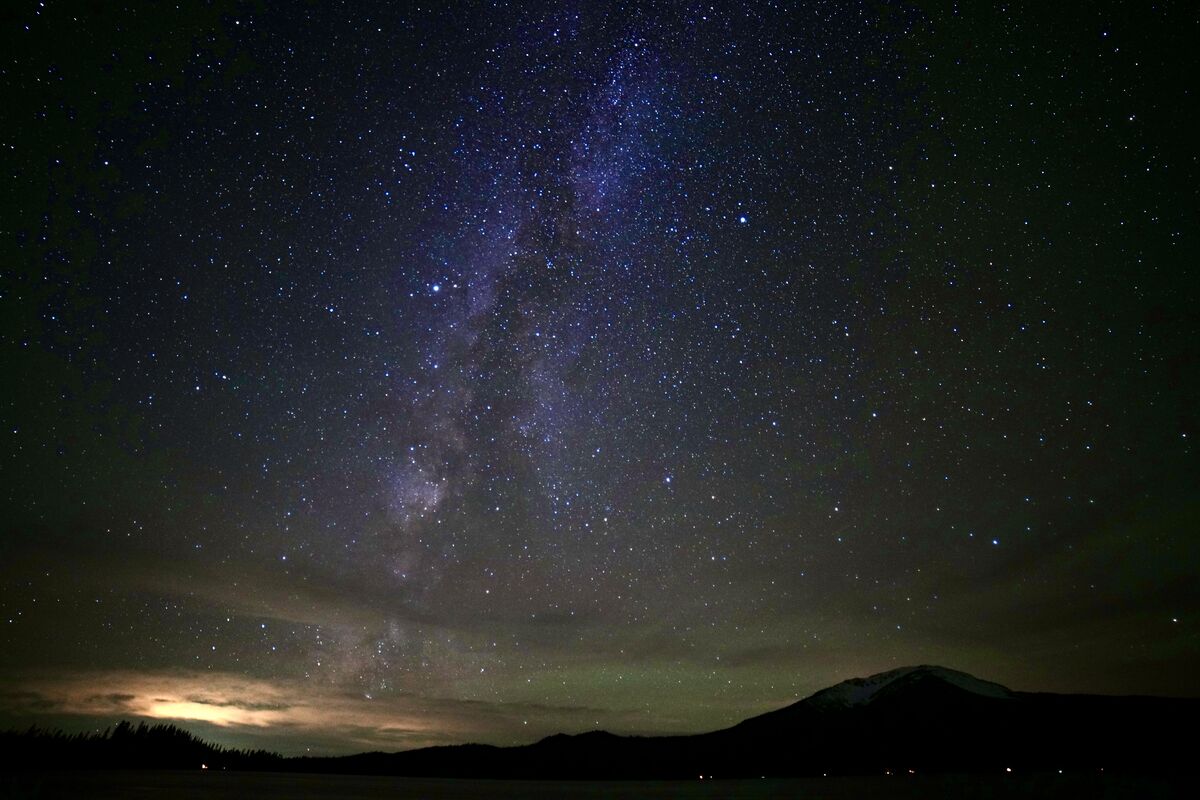I'm confused about iso
Nov 17, 2023 14:25:56 #
What really matters is: Is the final image what you are trying at achieve? Here is a test I did with my Sony A1 shot with the Sony 200-600mm G, As cameras progress, they improve on the difference between the lowest ISO and the highest. There is a world of difference between the images in my test here and a test I did 10 years ago with my Sony a65. In the film days, your max ISO was about 1000 and it was very grainy and weak color. I would not have been able to get a star shot even close to the one show here.
ISO 80

ISO 2500

ISO 102,400

ISO 2500

Nov 17, 2023 14:36:00 #
Ysarex
Loc: St. Louis
R.G. wrote:
ISO has a legitimate claim to its place in the exposure triangle. Fuddy-duddys are trying to keep us from having that descriptor at our disposal (describing ISO as an exposure variable).
Including the fuddy-duddy responsible for the "exposure triangle" in the first place.
When I learned photography and through much of my career teaching it, there was no exposure triangle. Brain Petersen in his book Understanding Exposure first presented what he called the Photographic Triangle. Included in that chapter of his book was a correct definition of exposure -- amount of light falling on the film/sensor -- and so it's fair to assume that since he knew what exposure was he named his triangle the Photographic Triangle.
The term was picked up on the Internet and soon renamed and then I'm sure to poor Brian's horror turned into the many uncountable contortions we find there today.
The problem isn't with the original concept but it is important to not loose a correct definition of exposure which Brain understood; he included a correct definition of exposure and avoided naming his triangle "exposure triangle."
Today's problem is the myriad ways the exposure triangle is commonly presented with heaps upon heaps of misinformation.
Eventually the exposure triangle found it's way into my classroom. I had to devote way too much time undoing the damage it did to my students understanding of how their cameras and photography worked. It doesn't have to be that way and it's frankly unfortunate -- Brain's Photographic Triangle was a useful construct, but in the hands of the blissful it's been distorted into a major vehicle of misinformation.
Nov 17, 2023 14:46:19 #
brentrh wrote:
ISO with film was set for film you loaded in your camera you set it and then never needed to change it. Depending on what you were photographing I learned when photographing photographing Rolex 24 race at night changing iso would give you better results but you had to use the change for full roll and hope you guessed right. With digital you have the freedom to change iso and take test shots to achieve results you desire
TYCO !
But what about real ISO ?
Nov 17, 2023 14:46:35 #
Ysarex wrote:
Including the fuddy-duddy responsible for the "exposure triangle" in the first place.
Today's problem is the myriad ways the exposure triangle is commonly presented with heaps upon heaps of misinformation.
Today's problem is the myriad ways the exposure triangle is commonly presented with heaps upon heaps of misinformation.
Your aversion to the exposure triangle concept not rational. If you feel that it has not been presented properly, come up with a simpler explanation.
You can't deny that the logic is unassailable. Doubling the ISO setting can be offset by doubling the shutter speed or closing the aperture one stop. All three elements can be played off of each other.
The fact that increasing ISO while reducing exposure can lead to a loss of quality (increased noise) does not invalidate the simple logic of the exposure triangle.
Nov 17, 2023 14:47:02 #
FrankN wrote:
For the recird, there was no ISO speed rating back in the “good ok’ film days”.
Film speed ratings used ASA.
Film speed ratings used ASA.
I used ISO rated and labelled film for years. It gave two numbers, one similar to the old ASA number and the other the DIN number.
Nov 17, 2023 14:47:36 #
Ysarex wrote:
When you copy something verbatim from the Internet you should reference the source. Otherwise you can be fairly criticized for plagiarism. Here's the reference for what you just copied and posted: https://www.picturecorrect.com/understanding-native-base-iso-on-your-camera/
It contains some misinformation by the way. Should we attribute that misinformation to you?
It contains some misinformation by the way. Should we attribute that misinformation to you?
I never claimed it was from me. I included the headings from the source. Feel free to address any misinformation that your superior knowledge knows about, and be sure you also attribute everything you ever say in UHH, ok.
LOL
Nov 17, 2023 14:48:55 #
Nov 17, 2023 14:50:44 #
burkphoto wrote:
Oh, yeah. Unfortunately, for photojournalists and event photographers, adding light is not always permissible, or even feasible.
Using "compensating" developers was the usual approach. Underexpose by 1-2 stops, then "push" develop so the highlights and mid-tones print brighter. We lost our deepest shadows, but we got images that could tell the story. Optimal? No. Usable? If that's all the editor or customer could get...
Using "compensating" developers was the usual approach. Underexpose by 1-2 stops, then "push" develop so the highlights and mid-tones print brighter. We lost our deepest shadows, but we got images that could tell the story. Optimal? No. Usable? If that's all the editor or customer could get...


Nov 17, 2023 14:53:38 #
srt101fan wrote:
You say: i "Noise is a typical side-effect ... (show quote)
It is from here: https://www.picturecorrect.com/understanding-native-base-iso-on-your-camera/#:~:text=What%20Is%20Base%20ISO%3F,possible%20noise%20at%20this%20setting.
Cheers
Nov 17, 2023 14:55:02 #
The simplest way to think about Base ISO is to think about Film
The ASA, or DIN and later ISO was simply a standard such that different films could be compared and and would render a scene correctly under standardized illumination. The simplest "standard" illumination was the sunny 16 rule.
Kodachrome had a film speed of 25 for most of it's life and on a sunny day , if you exposed at 1/25 sec at f/16 you would get a 'correctly exposed slide. There was always judgement involved and if you were at the beach, or the Sahara f/22 would be better
With Digital sensors the attempt was made to do the same thing . Manufacturers designed a sensor then measured what exposure was correct under similar controlled conditions. That is Base ISO. They are close, but not exactly comparable between different manufacturers. In order to expose pictures in lower light manufacturers can apply digital Gain to boost sensitivity quite effectively. This is analogous to "Push Processing in the old days. NOT the same , but analogous. It works amazingly well, but there is a cost--- the more gain you apply the more you reduce dynamic range, and the more you increase noise. This varies from sensor to sensor due to many factors Sensor design and in camera processing. But the bottom line is this every sensor will display its best dynamic range and noise characteristics at Base ISO. So the higher numbers we crank in are not technically ISO ratings but they are settings that perform similar to an ISO of that number. The base is the truest ISO, but modern cameras have allowed us to have amazing flexibility in boosting iso numbers
It is worth noting that most pictures we take do not NEED the maximum DR or Lowest noise to look great so effectively most cameras perform great over a wide range
I hope this helps
The ASA, or DIN and later ISO was simply a standard such that different films could be compared and and would render a scene correctly under standardized illumination. The simplest "standard" illumination was the sunny 16 rule.
Kodachrome had a film speed of 25 for most of it's life and on a sunny day , if you exposed at 1/25 sec at f/16 you would get a 'correctly exposed slide. There was always judgement involved and if you were at the beach, or the Sahara f/22 would be better
With Digital sensors the attempt was made to do the same thing . Manufacturers designed a sensor then measured what exposure was correct under similar controlled conditions. That is Base ISO. They are close, but not exactly comparable between different manufacturers. In order to expose pictures in lower light manufacturers can apply digital Gain to boost sensitivity quite effectively. This is analogous to "Push Processing in the old days. NOT the same , but analogous. It works amazingly well, but there is a cost--- the more gain you apply the more you reduce dynamic range, and the more you increase noise. This varies from sensor to sensor due to many factors Sensor design and in camera processing. But the bottom line is this every sensor will display its best dynamic range and noise characteristics at Base ISO. So the higher numbers we crank in are not technically ISO ratings but they are settings that perform similar to an ISO of that number. The base is the truest ISO, but modern cameras have allowed us to have amazing flexibility in boosting iso numbers
It is worth noting that most pictures we take do not NEED the maximum DR or Lowest noise to look great so effectively most cameras perform great over a wide range
I hope this helps
Nov 17, 2023 14:55:38 #
From Sony:
What is Base ISO?
Base ISO refers to the ISO sensitivity providing maximum latitude from the image sensor. At this ISO sensitivity, gain is not added needlessly to output signals from the sensor. This level of ISO sensitivity provides maximum performance from a camera's image sensor.
For example, when an image sensor with a latitude of up to 15 stops produces a 15-stop signal at the base ISO, increasing the gain or ISO sensitivity would prevent highlight information from being recorded, because it would not fit within this latitude.
Shooting at the base ISO is required in log shooting in order to obtain maximum latitude.
Models with multiple base ISOs enable you to switch the base ISO to suit the shooting conditions.
Cheers
What is Base ISO?
Base ISO refers to the ISO sensitivity providing maximum latitude from the image sensor. At this ISO sensitivity, gain is not added needlessly to output signals from the sensor. This level of ISO sensitivity provides maximum performance from a camera's image sensor.
For example, when an image sensor with a latitude of up to 15 stops produces a 15-stop signal at the base ISO, increasing the gain or ISO sensitivity would prevent highlight information from being recorded, because it would not fit within this latitude.
Shooting at the base ISO is required in log shooting in order to obtain maximum latitude.
Models with multiple base ISOs enable you to switch the base ISO to suit the shooting conditions.
Cheers
Nov 17, 2023 14:59:27 #
From Adorama's David Bergman:
Native and Base ISO | Ask David Bergman
https://www.youtube.com/watch?v=vX531qzdiB0
"Coming to you from David Bergman with Adorama TV, this helpful video tutorial will show you the differences between base and native ISO. In the days of film, ISO simply referred directly to the sensitivity of the film you were using and was easy to understand, but in the digital era, it gets a bit more nuanced. Most digital sensors actually only have one sensitivity level. When you change the ISO, what you are roughly doing is changing the amount of a post-sensor gain that is applied to the signal, unlike film, where if you changed ISO by swapping out the cartridge, you were actually directly changing the sensitivity. Practically, this distinction doesn't really affect your day-to-day work as long as you understand the consequences of raising the ISO on image quality, but it can still be quite helpful to learn more about how ISO works. Check out the video above for the full rundown from Bergman."
Cheers
Native and Base ISO | Ask David Bergman
https://www.youtube.com/watch?v=vX531qzdiB0
"Coming to you from David Bergman with Adorama TV, this helpful video tutorial will show you the differences between base and native ISO. In the days of film, ISO simply referred directly to the sensitivity of the film you were using and was easy to understand, but in the digital era, it gets a bit more nuanced. Most digital sensors actually only have one sensitivity level. When you change the ISO, what you are roughly doing is changing the amount of a post-sensor gain that is applied to the signal, unlike film, where if you changed ISO by swapping out the cartridge, you were actually directly changing the sensitivity. Practically, this distinction doesn't really affect your day-to-day work as long as you understand the consequences of raising the ISO on image quality, but it can still be quite helpful to learn more about how ISO works. Check out the video above for the full rundown from Bergman."
Cheers
Nov 17, 2023 14:59:59 #
Ysarex wrote:
Including the fuddy-duddy responsible for the &quo... (show quote)
Brian Peterson did use the term "Exposure Triangle" in the first 3 editions of his book "Understanding Exposure" Only in his 4th edition did he changed to the "Photographic Triangle".
Nov 17, 2023 15:08:28 #
Ysarex
Loc: St. Louis
selmslie wrote:
Your aversion to the exposure triangle concept not rational.
Wonder why I said this then: "It doesn't have to be that way and it's frankly unfortunate -- Brain's Photographic Triangle was a useful construct..."
Nov 17, 2023 15:09:33 #
BebuLamar wrote:
Brian Peterson did use the term "Exposure Triangle" in the first 3 editions of his book "Understanding Exposure" Only in his 4th edition did he changed to the "Photographic Triangle".
Hmmmmm...,
Exposure Triangle seems more definitive, relevant, and succinct for the subject matter.
Photographic Triangle is way too general...
Could also be Realist/Visionary/Documentary....
But hey, people love to have their own interpretations of <many> things.
If you want to reply, then register here. Registration is free and your account is created instantly, so you can post right away.




